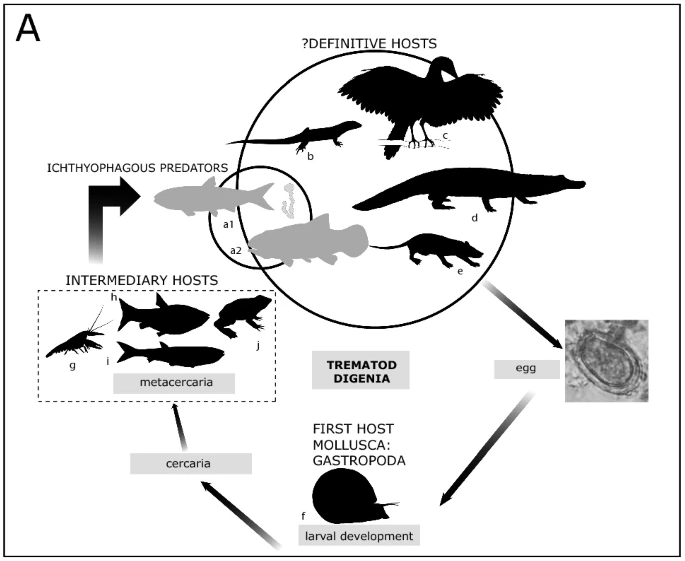Investigation
Helminth eggs from early cretaceous faeces
Sandra Barrios-de Pedro, Antonio Osuna & Ángela D. Buscalioni
The exceptional fossil site of Las Hoyas (upper Barremian, Cuenca, Spain) yields abundant small to medium vertebrate coprolites, hindering the search for parasites. We studied the contents of 29 coprolites that were previously classified into distinct morphotypes. Several parasitic eggs were retrieved from two of these coprolites, confirming the second record of digenea trematode eggs and nematode (ascaridid) eggs from an Early Cretaceous locality. The cylindrical coprolite containing anisakid eggs was likely produced by a crocodylomorph as the parasite host, whereas the bump-headed lace coprolite indicates the role of a fish as an intermediary or definitive host of the trematodes and ascaridids. These trace and body fossils show that the Las Hoyas 126–129 Ma lacustrine ecosystem documents the early connection between basal Gonorynchiformes fish and digenetic trematodes.
Helminth eggs from early cretaceous faeces
